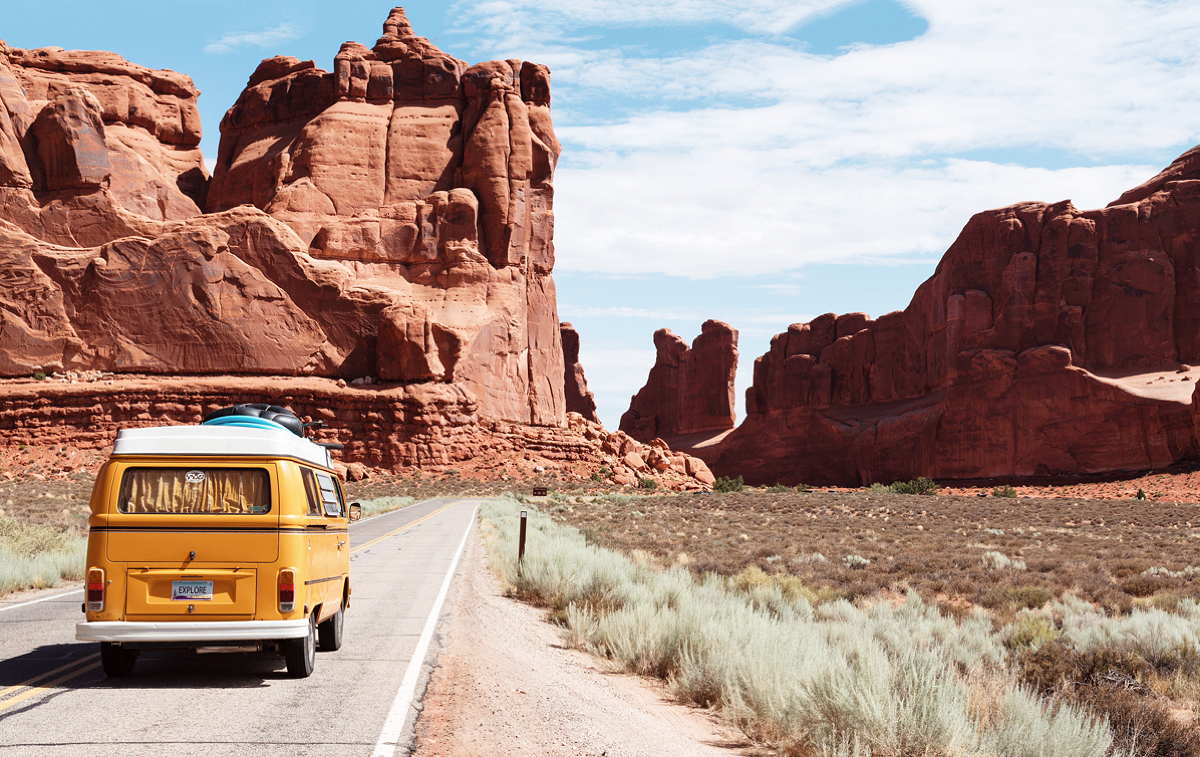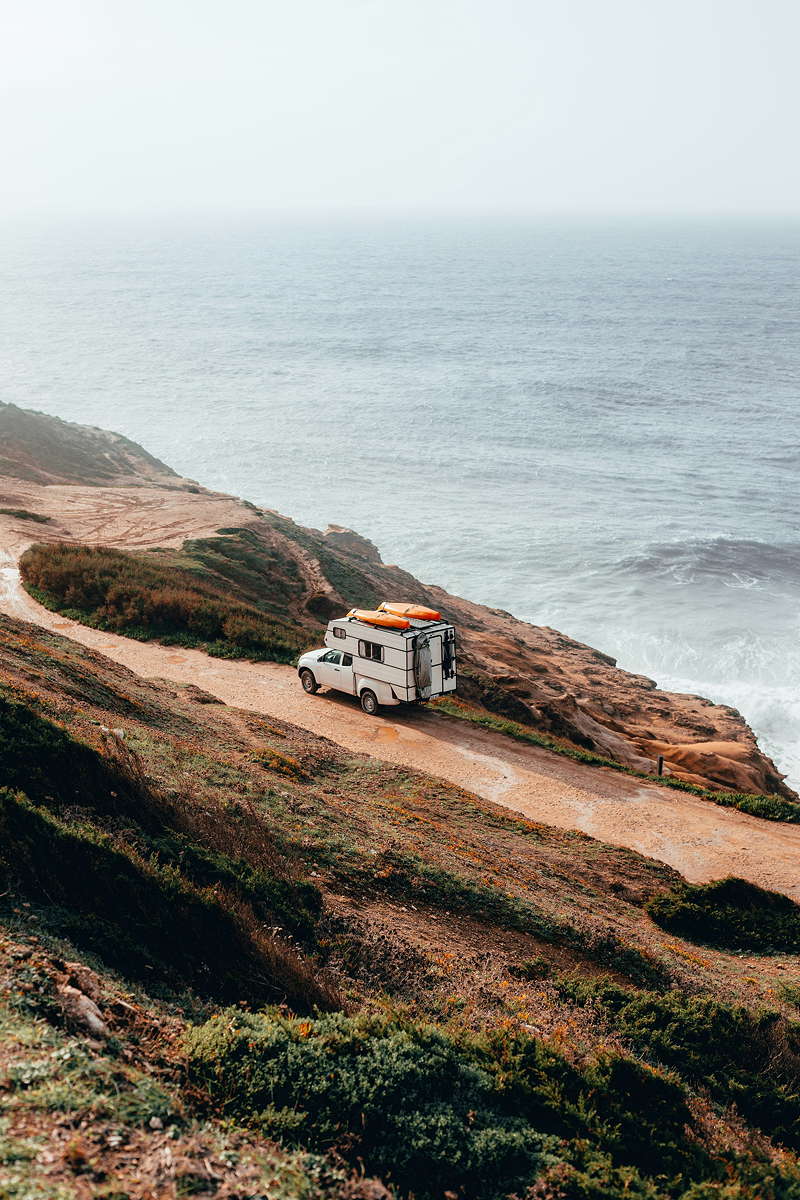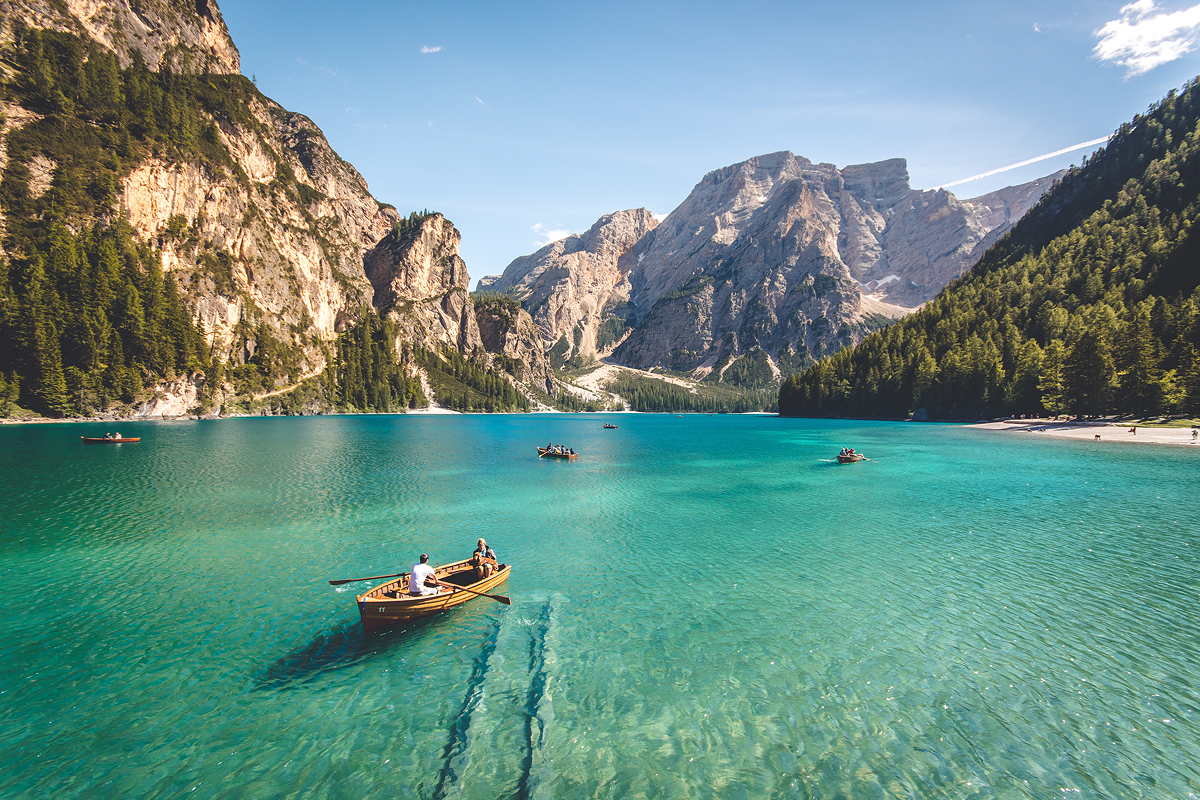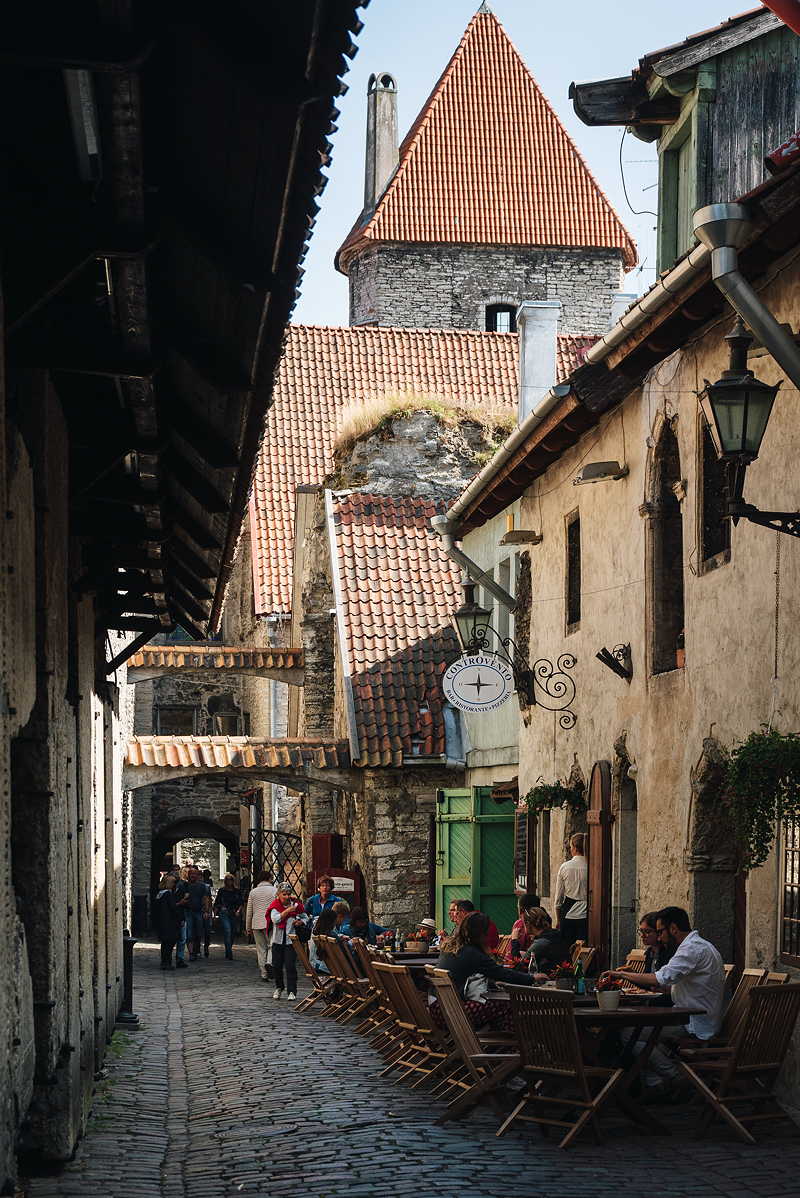
What is Slow Travel? | A Guide To Sustainable and Mindful Tourism
How well can you truly understand a place in just two days? Packaged deals, mass tourism, and swift travel may allow us to hop between multiple locations in a short span, but we barely get to connect and experience a place. Slow travel challenges this notion, advocating for a mindful and immersive approach to sustainable tourism. Here’s an insight into how it works.
2 days, one night. Next destination. 3 days, 2 nights… next aeroplane. After a two-week vacation, we had the opportunity to explore five different countries. While this rapid exploration allows us to experience diverse places, it comes with social and environmental consequences. Global tourism contributes to 8% of greenhouse gas emissions, with one significant factor being the rising number of flights and various modes of transportation that take us to numerous destinations in short periods. As many people rush to a single place, we also contribute to overcrowding. Additionally, it is hard to connect with a place, its community, and its essence in just a couple of days. Recognising these challenges, slow tourism is revolutionising how we approach travel and offers a solution to create meaningful experiences. Through this approach, the journey is as important as the destination.
WHAT IS SLOW TRAVEL
Slow travel is not bound by a rigid definition or specific durations for staying in a place. Broadly, it embraces the idea of setting our own pace and travelling comfortably. The essence lies in moving away from the stress of trying to cover all the highlights of a destination within a short timeframe, only to rush to the next spot. In contrast, slow tourism advocates for visiting fewer places, prolonging our stay, and truly getting to know the essence of each location. It promotes a more authentic and meaningful travel experience, fostering a genuine appreciation for the intricacies and nuances of the places we explore.
TRANSPORTATION
The more unnecessary transportation we can avoid, the better. When travelling to multiple locations, planes often provide the fastest mode of transportation. However, if we can opt for trains or greener modes of transportation that’s better. Although these alternatives might take longer, with strategic trip planning we can space out travel time, alleviating the pressure to reach a destination urgently. By those means, cruise lines are generally off the list.
When exploring a destination, organised tours often whisk us through as many points of interest as possible in a single day. This is a suitable option when time is of the essence. Nonetheless, in the context of slow travel, where time is more flexible, we have the freedom to opt for a more effortless pace. Walking or choosing eco-friendly, non-motorised transportation like bikes becomes an option. While this may mean visiting fewer spots, the absence of pressure to rush to the next location allows us to fully immerse ourselves in each place.
Naturally, if a particular location resonates with us, we can choose to spend the entire day there. Conversely, if it doesn’t capture our interest, we can continue walking or cycling to the next destination. Furthermore, if we find a place that we genuinely love, where we feel comfortable, relaxed, or simply captivated by its beauty, there’s always the option to return the next day.


SLOW TRAVEL IS ABOUT IMMERSIVE EXPERIENCES
By this point, some may be wondering: What do we do for an extended period in one place? Slow tourism encourages us to engage in activities we genuinely enjoy or experiment with new ones. Particularly, it focuses on experiences rather than simply ticking off a checklist of must-see places in a country.
BECOMING A LOCAL
Slow travel extends beyond supporting the local community; it involves understanding and actively participating in it. If you’re unsure where to begin, immerse yourself in cultural gatherings—attend local festivals, events, and community activities to gain a deeper understanding of the community. Explore the local art and music scene to appreciate the cultural creativity.
Simply stroll through the neighbourhood, taking in the details. If a place captivates your curiosity, pause, and invest the time to explore and understand it. Often, these moments lead to discovering hidden gems like restaurants, shops, bars, and cafes. Embrace everyday life by exploring local markets and points of interest, providing a glimpse into the unique essence of your destination.
Taking the time to learn local phrases and words can open doors to meaningful interactions. As you journey through different points of interest, engage in conversations with residents to forge connections and gain insights into the community.
CONNECTING WITH NATURE
Slow travel is a fantastic opportunity to strengthen our bond with nature. This method allows us to spend more time exploring hiking trails, visiting natural reserves, and camping in peaceful surroundings. It’s the ideal time for adventurous spirits to try kayaking, canoeing, snorkelling, or paddle boarding. On the contrary, ff a slower pace is preferred, birdwatching, relaxing by the beach or lakeside, strolling through botanical gardens, or stargazing are all excellent possibilities. Certainly, a photography expedition is a fascinating option for photography enthusiasts. The idea is to participate in activities we enjoy while also stepping outside of our comfort zone and attempting activities that develop a meaningful connection with the place.
Moreover, for a truly mindful travel experience, consider embracing the Japanese concept of shinrin-yoku, which means taking in the atmosphere of the forest. Also known as Forest Bathing, this concept encourages us to immerse ourselves in the environment to reap the therapeutic benefits of nature. Instead of emphasising physical exercise, the idea is to concentrate on the sensory experience and engage all our senses in nature—simply being present in the moment. Evidently, various studies demonstrate the physiological and psychological benefits of the practice. The practice can help decrease stress by lowering cortisol levels, heart rate, and blood pressure. Also, it enhances feelings of happiness, and creativity, which contribute to a healthier immune system.


USEFUL APPS FOR SLOW TRAVEL
Various apps can help us when engaging in slow tourism. First, Spotted By Locals offers city guides to experience cities like a local and discover hidden gems. Currently operating in 82 cities, the app offers insider tips, personalised recommendations, and up-to-date articles. Through Spotted By Locals, we can avoid overcrowding and discover places only locals know about. Definitely, it is a great tool to connect with the community, taste authentic food and contribute to the local economy.
Meanwhile, Geoguida is a navigation app tailored for slow travel. The travel app is designed to enhance walking, hiking, and cycling experiences by guiding travellers efficiently at a leisurely pace. It provides points of interest, attractions, routes, and valuable information about the local area. The app helps us get to know the area better while also promoting sustainable and responsible travel practices.
For nature enthusiasts, we suggest using Plant Net—an app that enables us to identify plants through smartphone pictures. This citizen science project is designed to foster a greater understanding and appreciation of plant biodiversity. Developing a deeper connection involves understanding the local flora and their roles in the environment. If we are already captivated by nature, we can completely submerge ourselves in the natural world by slowly learning the intricacies of the flora surrounding us. Additionally, actively contributing to the project is possible by sharing personal plant observations.
BEST BOOKS FOR SLOW TRAVEL
If we are new to the concept, a great place to start is by reading “Slow Travel: A Movement”, by Penny Watson. The journalist and award-winning travel writer draws from experiences to encourage us to embrace slow tourism and build meaningful connections. The insider tips, and company and location recommendations put us to a good start for our next journey. Additionally, the philosophical approach of the book delves into understanding deeper concepts like cultural immersion and environmental sustainability.
For travel inspiration, we suggest “Unforgettable Journeys: Slow Down and See the World” by DK Eyewitness. Featuring 200 once-in-a-lifetime experiences worldwide, from Antarctica to Zambia, the book is richly illustrated and recommends exploring by foot, bike, car, rail, or water. Emphasising the beauty of the journey itself, the book encourages relishing the travel experience rather than solely fixating on reaching the next destination.
Furthermore, a great book to enhance our understanding of mindful experiences is “The Art of Slow Travel” by writer and slow traveller Bhavana Gesota. For the author, the path is as important as the destination. Gesota writes from personal experiences to showcase how deeply we can connect and experience each place we visit. The passionate writing engulfs the reader showing us that when we travel, we can also go through an internal transformative journey if we are mindful, slow travellers. It is all about savouring each location and experience at our own pace.
ONE FINAL TIP
Take a breather. It’s perfectly fine to take a day off, or even two. Slow travel frees us from the need to hurry and experience everything in a rush. Engaging in mindful relaxation can significantly enhance our appreciation for the next adventure. Constant exploration and discovery can be draining. Often, when we find ourselves exhausted during travel, we push through simply because “we’re already here, and we need to visit.” However, fatigue can diminish how much we enjoy a destination.
Taking the time to rest is essential; after all, we’re not machines. Seek out a peaceful spot, spend a day at the beach, or treat yourself to a visit to a local spa. Indulge in activities that bring relaxation. When we plan for slow travel, we afford ourselves ample time for stress-free enjoyment and the chance to rejuvenate before embarking on the next adventure. Remember, seeing the same place with fresh eyes and a rested mind can provide an entirely different, and more enjoyable, experience.
+ Highlight Image:
© David Marcu via Unsplash
+ Words:
Francesco Witt
Luxiders Magazine







